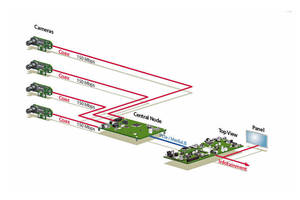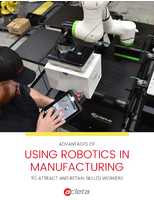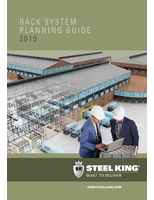MOST150 Design Enables Streaming Bandwidth Increase
Share:

MOST150 Design Enables Streaming Bandwidth Increase
The MOST Cooperation (MOSTCO) – the standardization organization for the leading automotive multimedia network Media Oriented Systems Transport (MOST) – presents the latest MOST150 architecture, enabling a streaming bandwidth of up to 1.2 Gbit/s. A multiport network interface controller allocates the true, full bandwidth of up to 150 Mbit/s in up to 8 branches. The different branches can be built with any topology, including star, ring, tree or daisy-chain. They can be hot-plugged or disconnected without influencing the flow of streaming data in the rest of the system. This flexibility can be used for applications such as a surround view camera system of up to eight cameras in a driver assist system (ADAS) network.
Video Streaming with Low Latency and Determinism
"Sending a video stream from the camera to the renderer means that a significant amount of video data is streamed for a prolonged period of time," explained Dr. Wolfgang Bott, Technical Coordinator of the MOST Cooperation. "The continuously flowing streams of data are not interrupted or delayed. The MOST Technology provides the transport of data streams with guaranteed bandwidth and ultra-low latency." It requires neither additional communication processors, nor addressing overhead, nor the bandwidth-wasting process of breaking up the data into packets that then need to be examined every time they go through a device along the route. Complying with safety protocols, MOST delivers video streams with low latency and determinism throughout the system.
The MOST multi-channel network approach with its inherent synchronicity due to the TDMA (Time Division Multiple Access) mechanism is perfectly adapted for ADAS, since it assures real-time determinism and ultra-low video latency at less than ten milliseconds.
About MOST Technology
MOST (Media Oriented Systems Transport) is a multimedia networking technology optimized for use in cars and other applications. It enables the transport of high Quality of Service audio and video together with packet data and real-time control over a single transmission medium. MOST can use plastic optical fibers (POF), coax based electrical physical layer, and shielded and unshielded twisted pair (STP/UTP) copper wires that meet automotive environmental requirements. Today, MOST is used in over 170 car models as the communication backbone for their information and entertainment equipment.
About MOST Cooperation
The MOST Cooperation (MOSTCO) is the organization through which MOST Technology is standardized and refined so that it continues to stay abreast of the latest industry requirements. Today it consists of 16 international carmakers and 60 key component suppliers. They have joined together to work with the MOST Technology and to contribute to its innovation. The MOST Cooperation is prepared to embrace efforts to further develop and standardize the technology for other industries and to establish the corresponding work structures. The MOST Cooperation was founded in 1998 to standardize MOST Technology as a global standard for multimedia networking. Audi, BMW, Daimler, HARMAN and Microchip Technology are its core partners and constitute its Steering Committee. For more information see http://www.mostcooperation.com.
Â
Media Contact:
Mandy Ahlendorf
Tel. +49 8151 9739098
MOSTCO_PR@mostcooperation.com
MOST Cooperation
Bannwaldallee 48
76185 Karlsruhe
Germany
http://www.mostcooperation.com
T +49 8151 9739098
F +49 89 2555 13 2203
E MOSTCO_PR@mostcooperation.com
W www.mostcooperation.com
Tw @MOST_Tech
ahlendorf hueggenberg gbr | Tannenweg 11 | 82319 Starnberg | Germany
General Management: Mandy Ahlendorf, Joachim Hüggenberg




